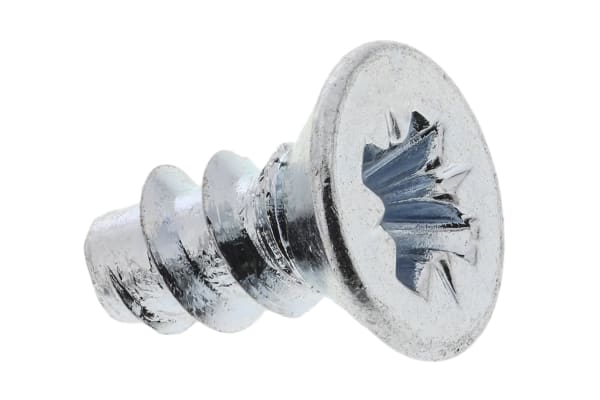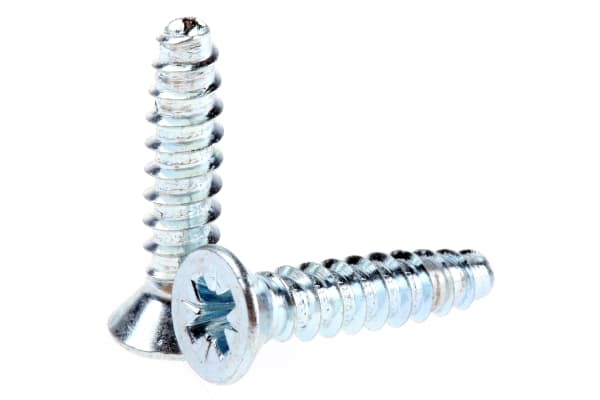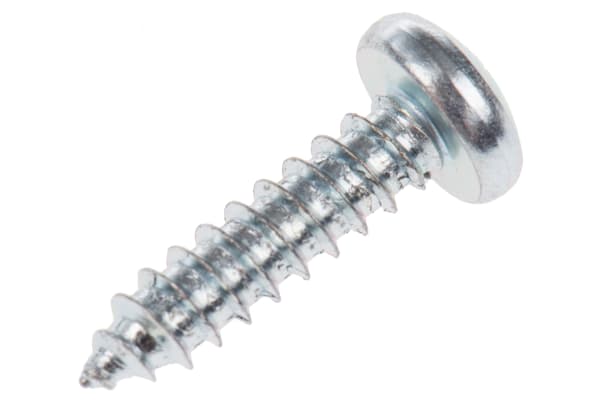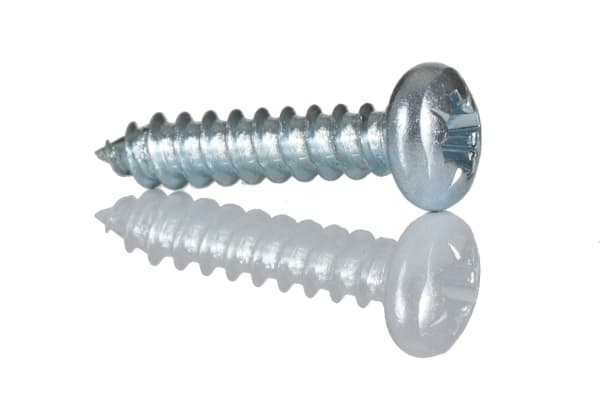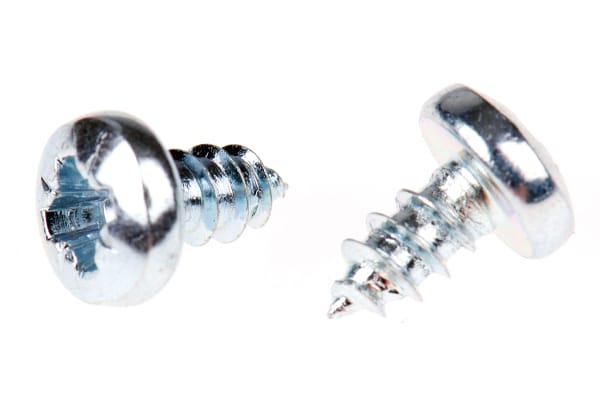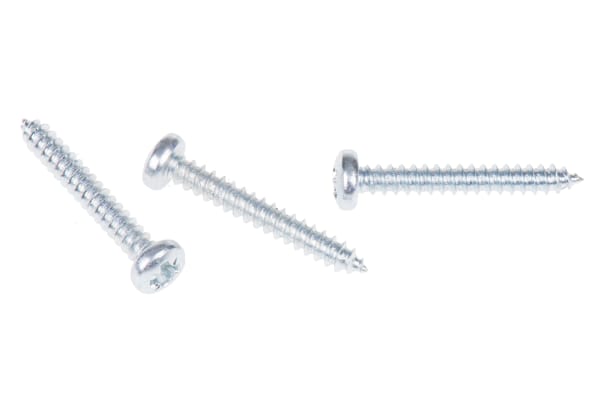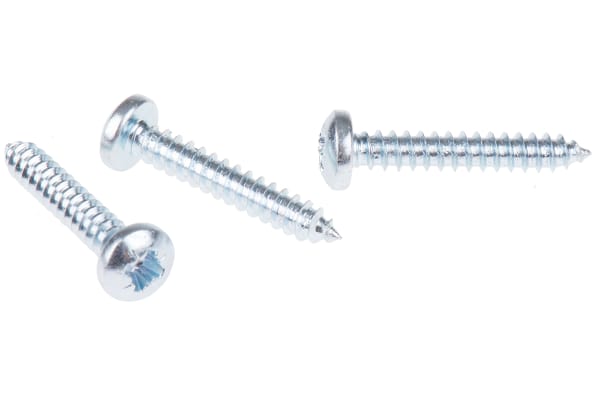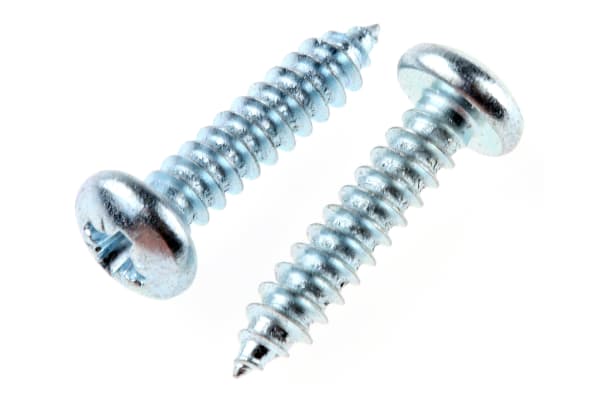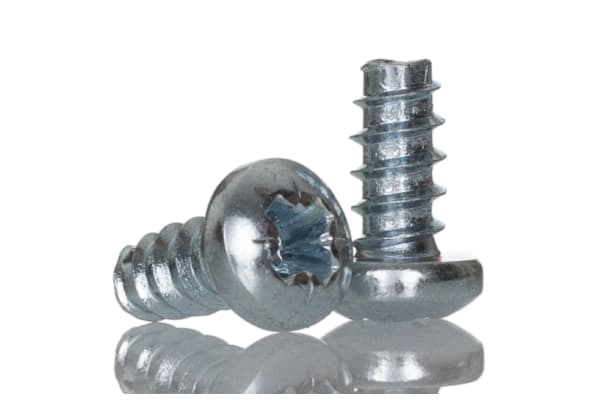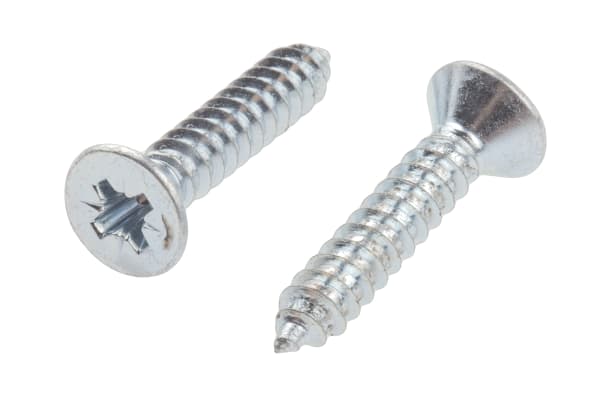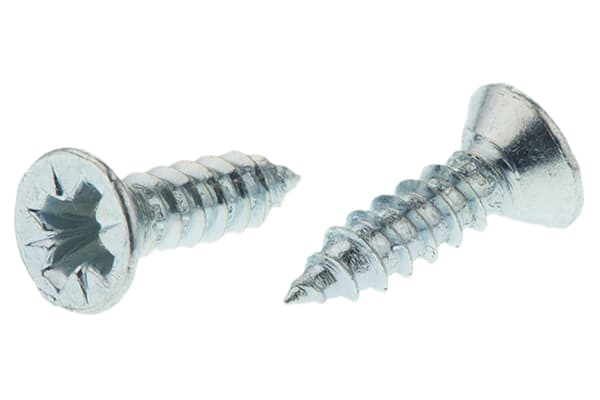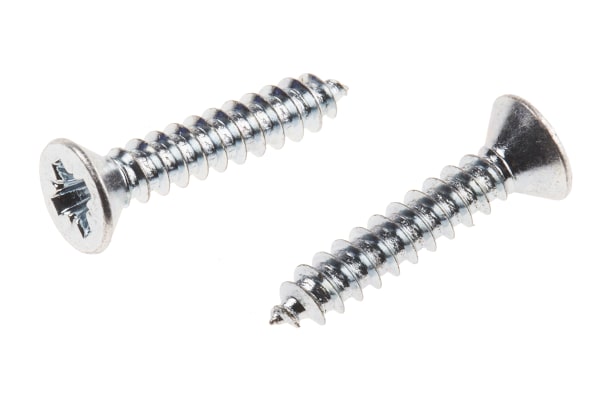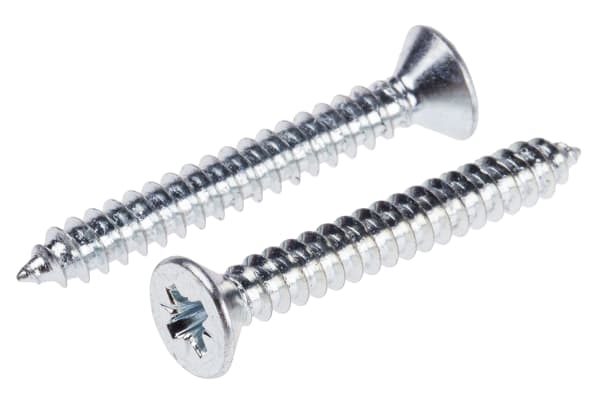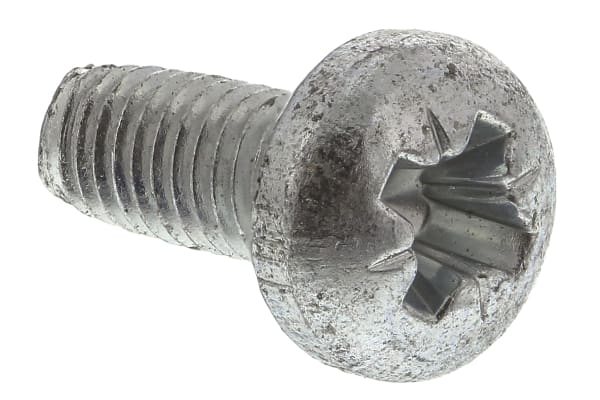Self Tapping Screws
Self-tapping screws are a type of fastener with a unique feature. They work by tapping their own threads in materials like plastic, wood, and metal. Self-tapping screws are split into two main categories, Thread-Forming and Thread-Cutting. The screws are similar in the job they do; however, they have two differences. One of the screws has a flat base, the other has a sharp point.The difference between self-tapping and self-drilling fasteners is that self-tapping screws will tap a hole into a soft material, self-drilling screws can drill a hole into anything from metal to wood meaning no pilot hole is needed.Thread-Forming ScrewBefore using this self-tapping screw, it is recommended that a pilot hole is drilled into the material. As thread-forming screws have a flat nose, it makes the drilling process easier and is used when fastening plastic together.Thread-Cutting ScrewThis self-tapping screw does not require any preparation. As it has a pointed tip, it is not necessary to create a pre-drilled pilot hole. Thread-cutting screws can pierce a small entry hole while being driven into the material the thread is being created.Self-tapping screws are used where an application requires regular maintenance and regular easy access. These screws are useful in situations where products must be assembled and disassembled, such as access panels or even furniture.What self-tapping fasteners are available?When choosing the best self-tapper for your job, there are a few key points to consider e.g. the right head shape, drive type, and thread size are essential. Another factor would be the material the screws are used with, and the environment and elements they are exposed to.As a screwdriver is the only real tool used when working with self-tappers, make sure that you have the screwdriver with the appropriate drive type.Drive TypesCrossheadHexagon HeadPoziTorxHead ShapesPan HeadCountersunkButton HeadMaterials and FinishesSteelStainless SteelBright Zinc PlatedClear Passivated
-
RS PRO Bright Zinc Plated Steel Countersunk Head Self Tapping Screw, N°4 x 6mm Long
VND172,584.00Bag (1 Bag of 100) -
RS PRO Bright Zinc Plated Steel Flat Head Self Tapping Screw, N°10 x 1/2in Long
VND374,952.00Bag (1 Bag of 100) -
RS PRO Bright Zinc Plated Steel Flat Head Self Tapping Screw, N°8 x 19mm Long
VND381,276.00Bag (1 Bag of 100) -
RS PRO Bright Zinc Plated Steel Pan Head Self Tapping Screw
VND291,312.00 -
RS PRO Bright Zinc Plated Steel Pan Head Self Tapping Screw, N°10 x 1.1/4in Long 32mm Long
VND355,164.00Box (1 Box of 100) -
RS PRO Bright Zinc Plated Steel Pan Head Self Tapping Screw, N°10 x 1/2in Long 13mm Long
VND190,944.00Box (1 Box of 100) -
RS PRO Bright Zinc Plated Steel Pan Head Self Tapping Screw, N°10 x 1in Long 25mm Long
VND288,048.00Box (1 Box of 100) -
RS PRO Bright Zinc Plated Steel Pan Head Self Tapping Screw, N°10 x 3/4in Long 19mm Long
VND290,496.00Box (1 Box of 100) -
RS PRO Bright Zinc Plated Steel Pan Head Self Tapping Screw, N°4 x 1/2in Long 13mm Long
VND81,600.00Box (1 Box of 100) -
RS PRO Bright Zinc Plated Steel Pan Head Self Tapping Screw, N°6 x 1/4in Long 6.5mm Long
VND103,428.00Box (1 Box of 100) -
RS PRO Bright Zinc Plated Steel Pan Head Self Tapping Screw, N°6 x 1in Long 25mm Long
VND179,928.00Box (1 Box of 100) -
RS PRO Bright Zinc Plated Steel Pan Head Self Tapping Screw, N°6 x 3/4in Long 19mm Long
VND165,852.00Box (1 Box of 100) -
RS PRO Bright Zinc Plated Steel Pan Head Self Tapping Screw, N°6 x 3/8in Long 9.5mm Long
VND124,848.00Box (1 Box of 100) -
RS PRO Bright Zinc Plated Steel Pan Head Self Tapping Screw, N°8 x 1in Long 25mm Long
VND234,600.00Box (1 Box of 100) -
RS PRO Bright Zinc Plated Steel Pan Head Self Tapping Screw, N°8 x 3/4in Long 19mm Long
VND201,960.00Box (1 Box of 100) -
RS PRO Bright Zinc Plated Steel Pan Head Self Tapping Screw, N°8 x 9mm Long
VND306,612.00Bag (1 Bag of 100) -
RS PRO Bright Zinc Plated, Clear Passivated Steel Countersunk Head Self Tapping Screw, N°10 x 1in Long 25mm Long
VND271,320.00Box (1 Box of 100) -
RS PRO Bright Zinc Plated, Clear Passivated Steel Countersunk Head Self Tapping Screw, N°6 x 1/2in Long 13mm Long
VND118,728.00Box (1 Box of 100) -
RS PRO Bright Zinc Plated, Clear Passivated Steel Countersunk Head Self Tapping Screw, N°6 x 3/4in Long 19mm Long
VND155,856.00Box (1 Box of 100) -
RS PRO Bright Zinc Plated, Clear Passivated Steel Countersunk Head Self Tapping Screw, N°8 x 1.1/4in Long 32mm Long
VND175,440.00Box (1 Box of 100) -
RS PRO Bright Zinc Plated, Clear Passivated Steel Countersunk Head Self Tapping Screw, N°8 x 3/4in Long 19mm Long
VND174,012.00Box (1 Box of 100) -
RS PRO Bright Zinc Plated, Clear Passivated Steel Pan Head Self Tapping Screw
VND169,932.00 -
RS PRO Clear Passivated, Galvanised Steel Pan Head Self Tapping Screw, M3 x 5mm Long
VND149,736.00Bag (1 Bag of 100) -
RS PRO Clear Passivated, Galvanised Steel Pan Head Self Tapping Screw, M4 x 10mm Long
VND226,032.00Bag (1 Bag of 100)



